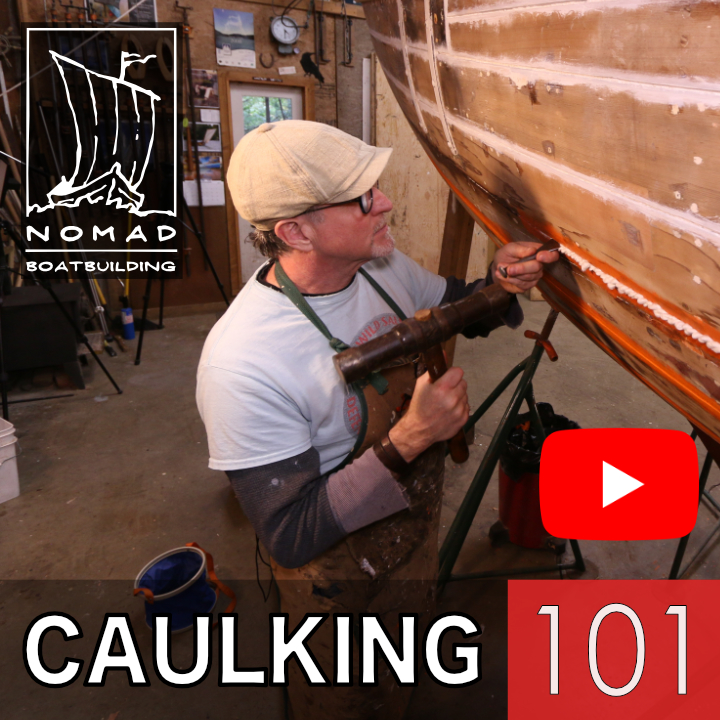Caulking 101 – on Canada’s oldest sailboat
Caulking or “corking” as it is often pronounced is arguably one of the darkest arts in the wooden boatbuilding world.
It’s no wonder, given how difficult it is to even find the tools and materials these days.
Corking seems conceptually simple. Take some un-spun cotton and drive it into the seams with a funny looking hammer and putty knife. Then hammer the bejeezus out of it. Mush some goo into the remaining gap and crack a beer when you’re done.
The funny thing is that the reality is not so far from that picture I just painted except it requires a ton of restraint and judgement.
Judging just how much cotton to drive into a given seam is the first hurdle. You pretty much have to do a foot of seam to completion and then do it again until you get the variables fo loop size and spacing right. That’s not so difficult once you get going but I think setting the cotton right is the trickier job. Too light a touch and it may creep out. Too heavy and you can drive it through the seam to the inside.
The sweet spot as I was taught by a seasoned caulker was to set the caulking until the iron bounced back at you a wee bit.
The mechanics of the looping is such that you want to move in a forward motion while setting is a little easier working backwards.
Finding a seasoned caulker to show you the ropes was a difficult thing when I got started. There were very very few around and if you did find one, he was probably in his seventies and considering retirement.
Times have been hard in the local boatbuilding world throughout most of my career such that very few of my generation ever took it up as a primary activity. Luckily I now see a younger generation that is active driving the cotton with the machine gun rapidity that yells “pro-caulksman”.
Getting tools is the toughest part. You can make any sort of mallet work just fine but the advantage longer head of the traditional caulking mallet will be noticed about half an hour into the job. For reefing hooks I have found a workable tool available at auto repair suppliers for doing windshield replacement. You may find some off the shelf irons as I did but they will probably be garbage. In a pinch you may be able to grind down a wide cold chisel into something usable but that won’t be for the feint of heart. If you want the good stuff, it has to be hand made these days. Luckily for us, Instagram has come to the rescue.
The caulking iron making wizard is Med Chandler @shipscoyforge https://www.shipscoyforge.com
The mallet master is Stephen Kessler @oakumcaukler email: skessler1@mac.com
Cotton can often be found at many chandleries. It comes in one pound bundles.
Seam compound might be the trickiest but this is one area where you could get away with elastomeric caulks. They probably won’t make for a good seamless-ish result the way a traditional putty might. Larry Pardey discusses the subject in his book listed below.
There isn’t much literature on the subject but you can find a little about it in:
“How to build a Wooden Boat” by Bud McIntosh – this covers some of the basics.
“Details of Classic Boat Construction – the hull” by Larry Pardey – This might just be the best source info on the subject available.
In issue 16 of Wooden Boat Magazine we have a little info on the subject which seems to be an expansion of the Bud McIntosh material.
In issue 17 George Emlen published an article called: Conversation With a Master Caulker
If you do a search on the subject at Wooden Boat you will find a few other articles on the subject. If you are lucky, you may find a digital version of them.
More about Canada’s oldest sailboat, Dorothy: https://mmbc.bc.ca/dorothy/
Tony Grove’s personal and school websites:

